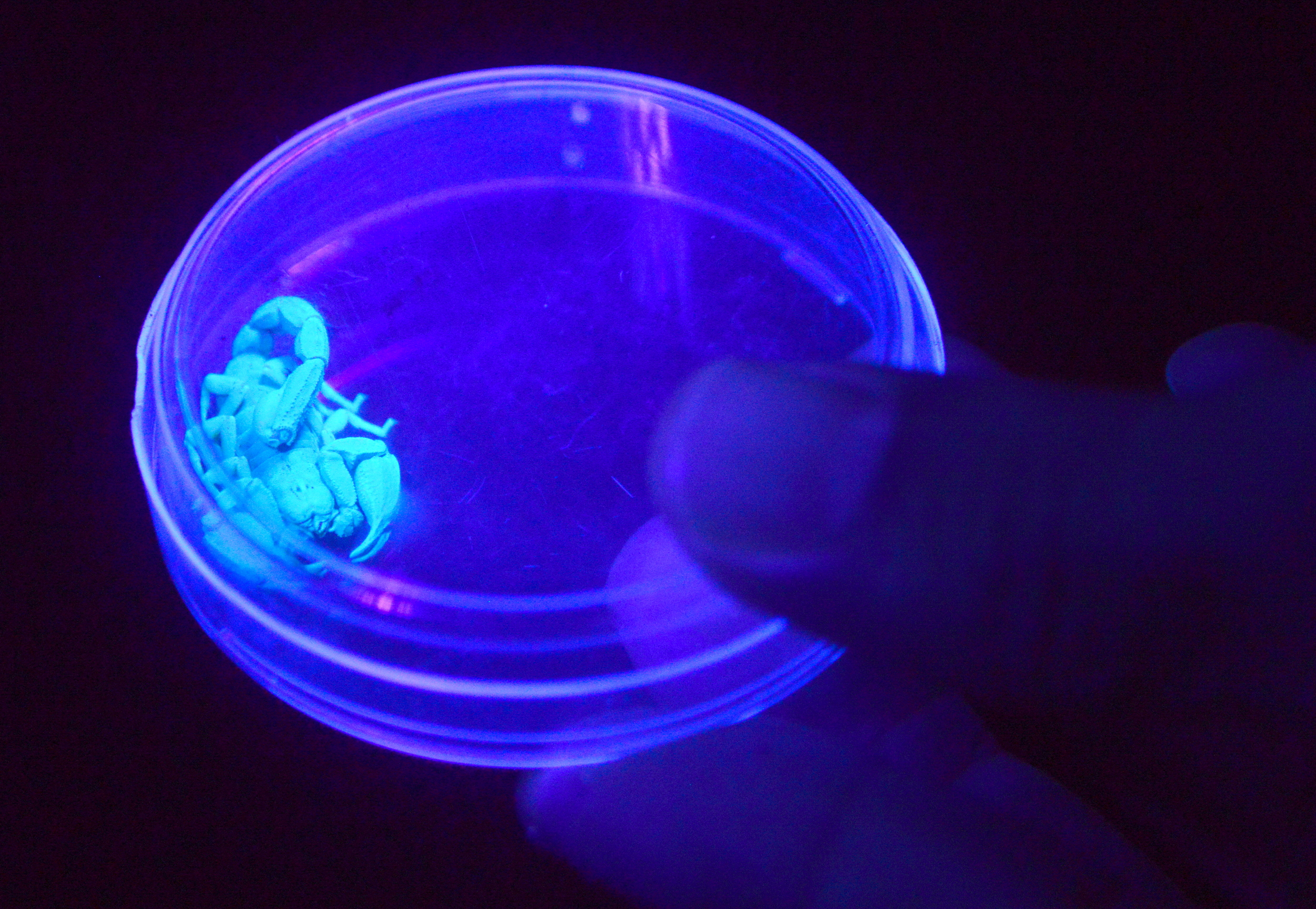Friday the 13th: a Spooky Quest for Glow in the Dark Scorpions
/By Chelsea Tu
It’s a windy Friday the 13th evening. Wisps of fog float over the redwoods, a half-cropped moon shines a lone light onto the shadows lurking behind the shrubs. Shapes and sounds rustling...and twenty-five nature enthusiasts suddenly emerge!
We first crowd around in a circle to watch as Constance and Tony, our guides for the hike, perform some straight up mad science magic. First, they place the fruit of a California Bay Laurel tree in a dish, and shine a UV light down. Who knew Bay Laurel fruits glowed in the dark! Constance then pours water over the Bay Laurel nut, and BAM – the whole dish lights up as swirls of blue light infuse into the water!
And off we go, a group of crepuscular animals (those that are primarily active during the period around dawn and dusk) scanning the night with UV flashlights, on a quest to find scorpions and other nocturnal, fluorescent creatures.
Our initial encounter of the night is some type of moss that glows a dark red when we shine UV onto it. Why does it glow red, and not a light blue like the Bay Laurel? Part of the answer is because certain types of chlorophyll fluoresce red. Quite a lot is unknown about why certain things fluoresce and why others don’t – it’s just one of the many mysteries in the natural world!
We search high and low for any sign of fluorescence: in the cracks of the trees, behind the ferns, under the logs. No luck. Then someone ahead says “Look here!” Excitedly, we stumble over one another in the dark (most people had normal flashlights and headlamps-but who wants to ruin the fun on Friday the 13th?!) to see in the pitch blackness a glowing millipede, little but mighty in its slow migration across the forest floor. Millipedes are vegetarians and gentle by nature, versus centipedes, which also have loads of legs but are carnivores that hunt with stingers and venom.
As we scan the forest with UV lights, the moon casts an iridescent spell over the forest. It lingers over the intricate webs that hacklemesh weaver spiders weave into the crevices of tree trunks. The sound of wings flap across one tree to another way above in the canopy. Feet shuffling quietly on the soft mat of the pine needles, dirt, and mosses. Whispers echo back and forth in the darkness.
And suddenly, our first Western forest scorpion sighting! Against complete darkness, we spot a small but bright blue-green disk wedged right between a bump and the hollow of the tree trunk. Although it is half hidden beneath the bark, its pincers are a dead giveaway. As it senses us getting closer, it retreats into the crevice. While no one knows exactly why scorpions can detect and absorb UV light, one theory is that since moonlight contains UV, scorpions will know they are safe from predators when they move to a place where no UV shines through, such as under a rock or branch.
After seeing only a couple of scorpions on the initial trail along the river, we turn to another trail that hugs the west side of the hill. As we encounter a little bit more open canopy and even a view of the glittering East Bay on our left, we start to see scorpions pop up one by one underneath roots and inside dirt holes like hidden gems. If we did not have the UV lights, we would be passing by this whole scorpion community without knowing it ever existed!
Constance and Tony lead us to a clearing where another CCNH naturalist, Ken-ichi, had set up a moth light to see what nocturnal insects we might attract. This night, we only see a few moths because it’s rather cold and windy out. Moths and butterflies (lepidopterans) are covered in thousands of tiny scales that shed at the touch like fine powder, so please be gentle with them!
At the end of my first night hike in years, I am a little sad to leave the magic that comes only with exploring the woods at night. There is so much about this nocturnal world one can learn!










All slideshow photos by Damon Tighe

